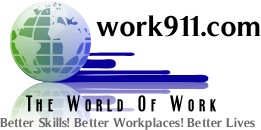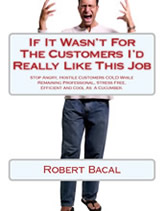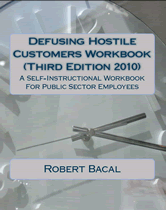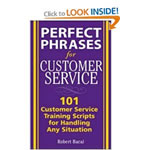
What Is Zero Defects?
Editor's Note: While TQM has faded from the awareness of many companies, perhaps due to its statistical orientation, and arcaneness, many of the concepts are still exceedingly valuable. Zero defects is one of them, since it touches on how we deliver customer service, the cost of errors, and a number of other topics related to effectiveness of organizations. In this retrospective visit, we look at what zero defects involves.
In my discussions and presentations to managers, the part that evokes the strongest concerns and responses is the use of the term zero defects. The term, used by Philip Crosby, scares people because it sounds like organizations must produce perfect products or supply perfect service. If that was the meaning of the term we would be in trouble, since we would have no means of defining "perfect" anything.
The concept of zero defects is critical to understand if you are embarking on a Total Quality Management (TQM) program.
Definition Of Zero Defects
A zero defects policy indicates to an organization that there is an expectation that each product or service must "conform to requirements". Zero defects defines the bulls-eye. But in order to understand the term, we need to examine what "conforming to requirements" really means.
What Are Requirements?
Requirements for a product or service are the standards for that product or service. For physical objects we often call them specifications. These standards set out the zone which we (and our clients) will accept, and that makes the product/service suitable for use.
For example, we may establish that our clients expect to be served (at a counter) within 3 minutes of arriving. We agree that this will comprise a "requirement" for our service. Note that we don't need to be perfect (ie. immediate service, no waiting), but what we need to do is ensure that each and every time, the service is provided within three minutes.
With a physical product, we would set requirements or specifications about what it must do, how it must do it, and how reliable it must be. We may define these standards as the minimum acceptable range that our clients will accept, and it is this range that must be produced each and every time.
Where Do Requirements Come From?
It is important that requirements be set with the client central in the process, as it is the client's judgement that will affect us, either positively or negatively. There is simply no substitute for actively seeking out the standards that the client expects to be met. This doesn't mean that the customer/client is always right, however. For example, if clients "expect" that a social service agency will pay for an annual trip to Australia, it is clear that this is not consistent with the mandate of the agency (contrary to public opinion). So, requirements in government need to be developed by referencing both the client, and the mandate and function of the organization.
Requirements That Grow
Since TQM is, above all, a continuous improvement process, we will find that our requirements need to be periodically re-examined. This is because our client's expectations may change, but our ability to improve our requirements should improve also. Typically, organizations, having managed to hit their requirements consistently, will raise these standards. Of course, in some cases this will not be necessary if the consumers of our service/product don't care.
Consequences of Non-Zero Defects
What happens when a product or service is not conforming to requirements, and zero defects is not occurring?
When an organization discovers this situation, it kicks into gear, a problem-solving process designed to discover the nature of the defects, and most importantly the cause of the defects. In other words non-zero defect products do not result in punishment, but in improvement in the processes that produce the product. Continuous improvement!
Summary
To summarize, zero defects refers to conforming to requirements each and every time. Requirements are set through accessing the clients (both internal and external), and by considering the mandate/function of the organization. When defects (non-conformance to requirements) occur, the organization uses problem-solving processes to identify the causes, improve the process, and eliminate the discrepancy.
In future Work-Smart Bulletins we will discuss ways of involving the client in the setting of requirements, and tools that can be used for measurement, and analysis within the problem solving process.
In closing, a little story may help illustrate the meaning of zero defects.
It is told that a Japanese manufacturing company was negotiating with an American firm for a contract to manufacture parts for a product. The American firm specified a requirement that the part would have 10% defects, that 10% of the parts would be unsuitable for use. The Japanese, used to much more stringent requirements, were somewhat perplexed, but being customer focused, they delivered a shipment of the part with exactly 10% defects. The Americans were happy (although probably not profitable). The Japanese adhered to zero defects, by setting requirements and meeting them.
This is an extreme example of using the customer to define the requirements, but illustrates the difference between a TQM and non-TQM mindset (and probably an example of culture clash and less than effective communication).





